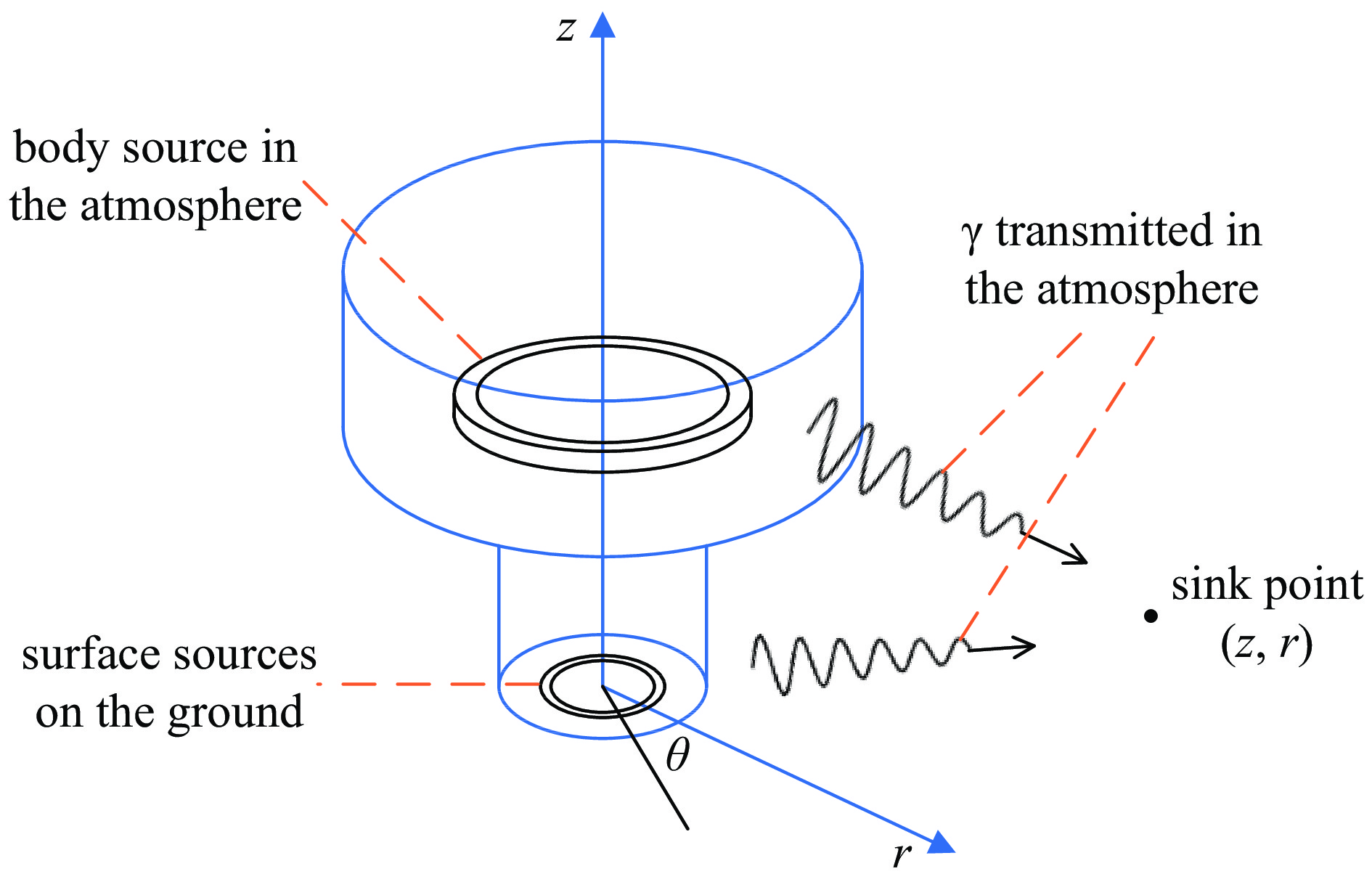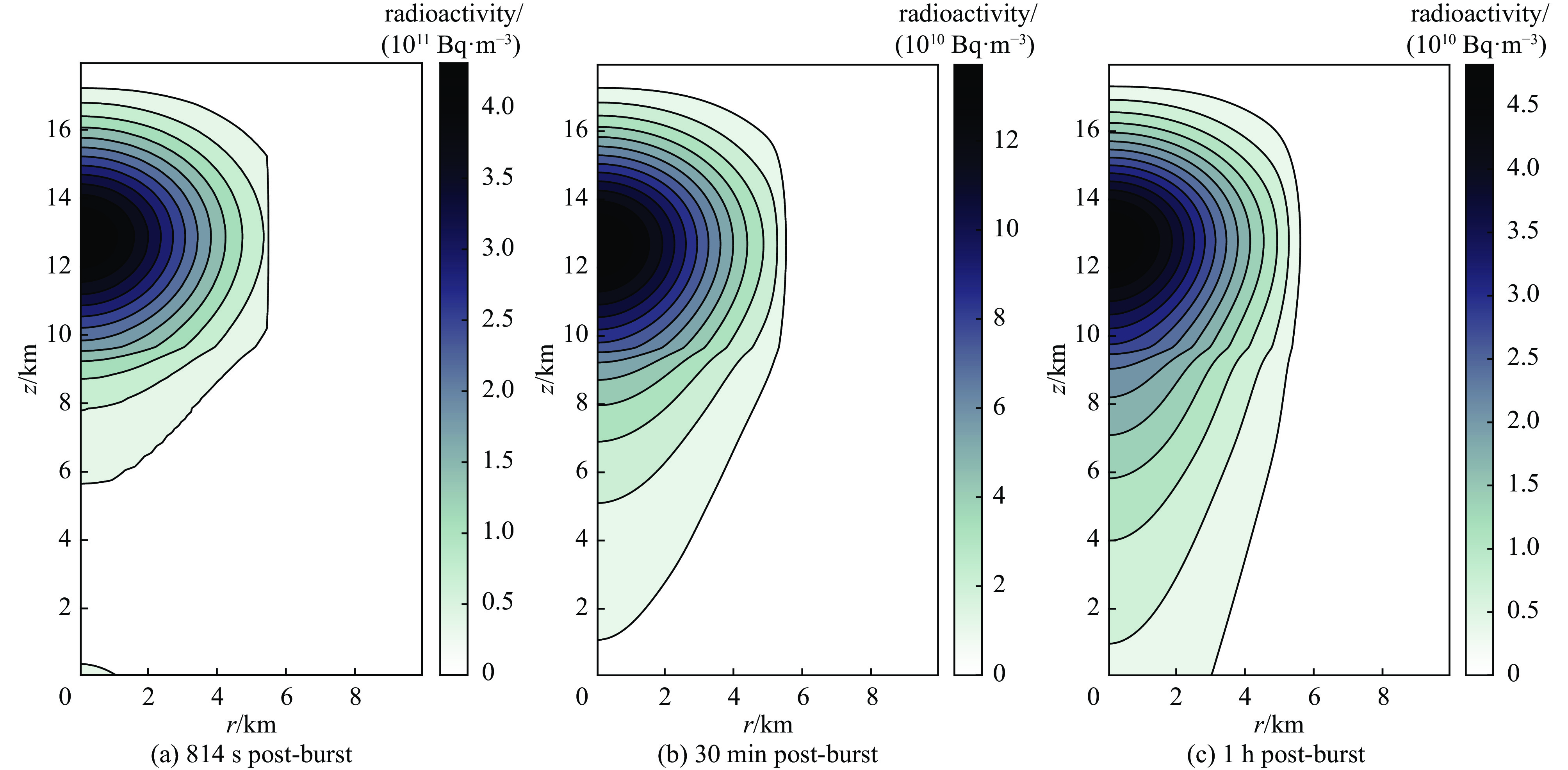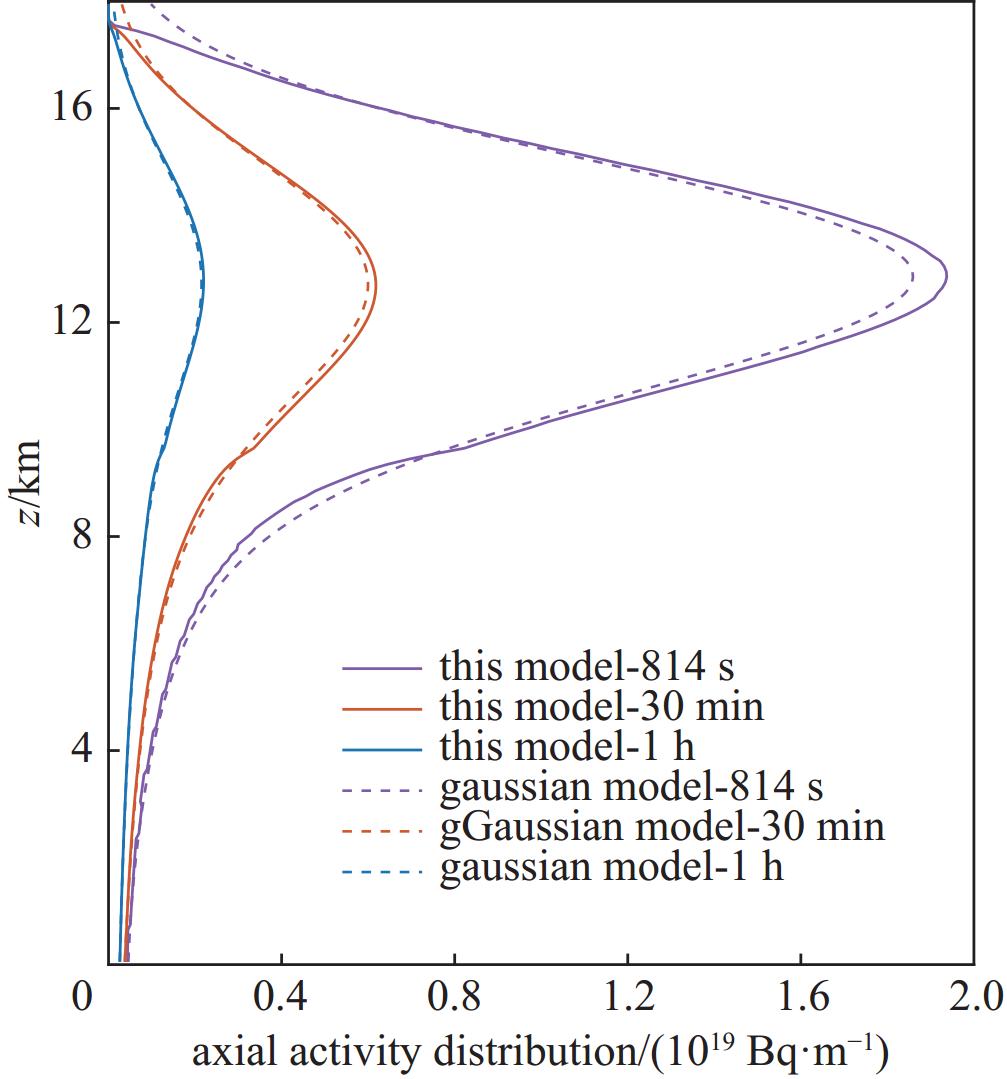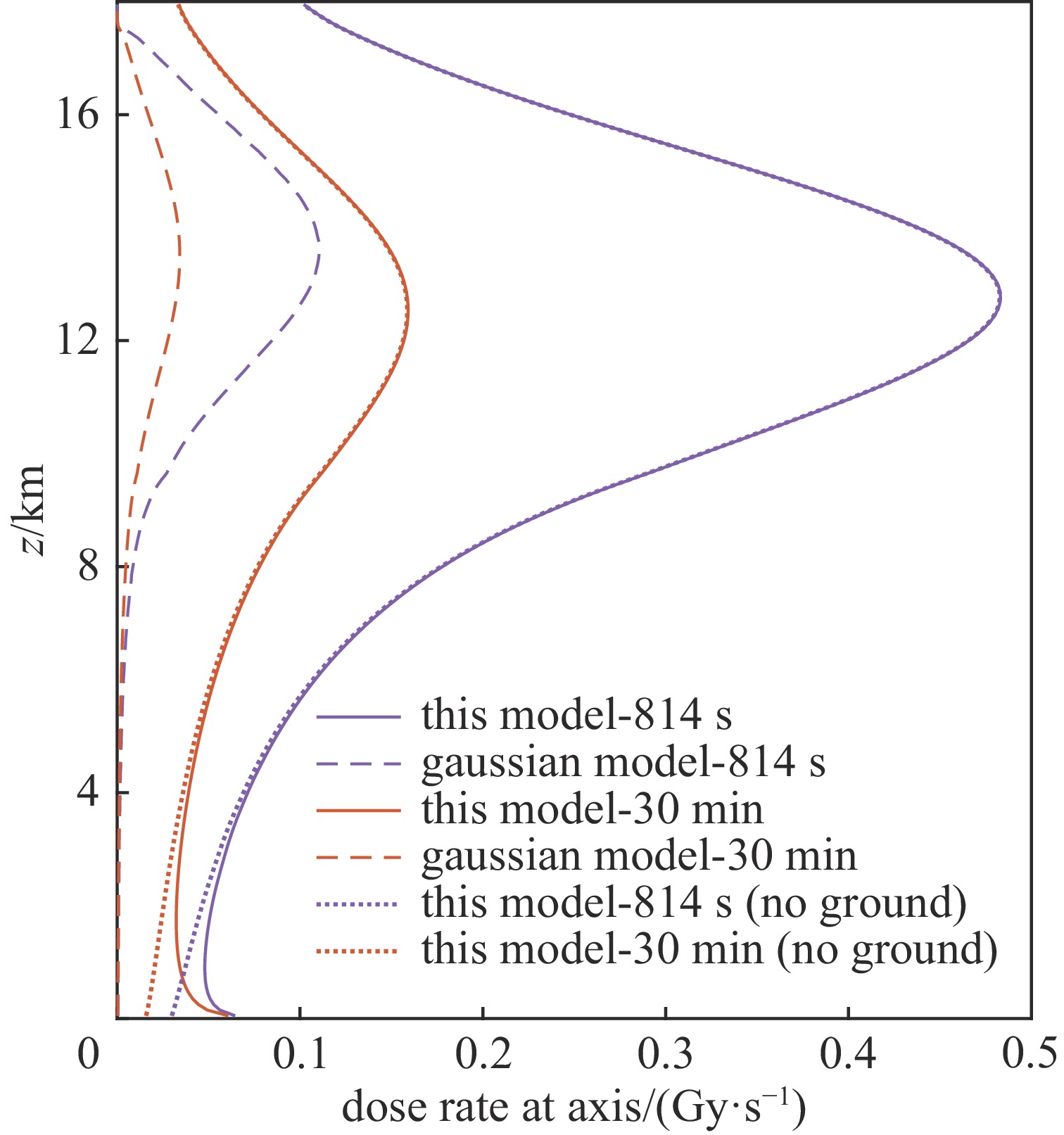Simulation of atmospheric γ ionizing radiation environment of near-ground nuclear explosion fallout under windless conditions
-
摘要: 近地爆烟尘由不同粒径尺度的放射性颗粒组成,且运动的时空尺度大。针对近地爆烟尘的大气γ电离辐射环境模拟这一难题,首先开展了γ大气辐射机理分析,进行了无风条件设定,建立了烟尘γ辐射的理论模型,其次引入和提出了相应的数值差分与积分算法,最后给出了对1 000 kt内华达近地爆烟尘在大气中的放射性活度和辐射剂量率的模拟算例,完成了一定的辐射环境时空演变规律总结与结果对比,对比发现本模型在保证活度结果一致性的同时,能计算出大气辐射剂量率的理论最大值。Abstract: Near-ground nuclear explosion fallout consists of radioactive particles of different particle size, and its motion has a large spatial and temporal scales. For the problem how to simulate the atmospheric γ ionizing radiation environment of the near-ground explosion fallout, in this paper, firstly, the mechanism analysis of atmospheric gamma radiation is carried out, the no-wind conditions are set up, and the theoretical model of fallout gamma radiation is established. Secondly, the corresponding numerical difference and integration algorithms are introduced and proposed. Finally, the simulation example of the radioactivity and radiative dose rate in the atmosphere of the 1000 kt Nevada near-ground explosion is given, a certain summary of the temporal and spatial evolution patterns of the radiation environment and the comparison of the results are accomplished, and the comparison reveals that the present model is able to calculate the theoretical maximum of the atmospheric radiation dose rate while ensuring the consistency of the activity results.
-
表 1 烟尘50个颗粒群的粒径区间及中值粒径
Table 1. Range and median particle size of 50 particle groups of fallout
range of particle
diameters/μmmedian particle
diameter dm/μmrange of particle
diameters/μmmedian particle
diameter dm/μmrange of particle
diameters/μmmedian particle
diameter dm/μm1~2.547 1.596 36.10~39.57 37.80 152.8~166.8 159.6 2.547~3.916 3.158 39.57~43.29 41.39 166.8~182.6 174.5 3.916~5.296 4.554 43.29~47.27 45.23 182.6~200.3 191.2 5.296~6.730 5.970 47.27~51.54 49.36 200.3~220.4 210.1 6.730~8.239 7.446 51.54~56.13 53.78 220.4~243.3 231.6 8.239~9.837 9.003 56.13~61.06 58.54 243.3~269.8 256.2 9.837~11.53 10.65 61.06~66.37 63.66 269.8~300.7 284.8 11.53~13.34 12.40 66.37~72.11 69.18 300.7~337.3 318.5 13.34~15.26 14.27 72.11~78.30 75.14 337.3~381.3 358.6 15.26~17.32 16.26 78.30~85.01 81.58 381.3~435.5 407.5 17.32~19.50 18.38 85.01~92.28 88.57 435.5~503.9 468.5 19.50~21.84 20.64 92.28~100.2 96.16 503.9~593.8 547.0 21.84~24.33 23.05 100.2~108.8 104.4 593.8~718.2 653.0 24.33~26.98 25.62 108.8~118.3 113.5 718.2~904.7 806.1 26.98~29.82 28.37 118.3~128.7 123.4 904.7~1227.0 1054.0 29.82~32.86 31.30 128.7~140.1 134.3 1227.0~2000.0 1567.0 32.86~36.10 34.44 140.1~152.8 146.3 -
[1] 郑毅, 李鹏, 耿娜, 等. 核爆炸监测技术概论[M]. 北京: 国防工业出版社, 2019Zheng Yi, Li Peng, Geng Na, et al. Introduction to nuclear explosion monitoring technology[M]. Beijing: National Defense Industry Press, 2019 [2] 郑毅, 张彦, 应纯同. 基于中尺度气象模式的放射性爆炸烟云模拟[J]. 原子能科学技术, 2008, 42(s1):371-374Zheng Yi, Zhang Yan, Ying Chuntong. Mesoscale meteorological model based on radioactive explosion cloud simulation[J]. Atomic Energy Science and Technology, 2008, 42(s1): 371-374 [3] 乔登江. 核爆炸物理概论[M]. 北京: 原子能出版社, 1988Qiao Dengjiang. Introduction to nuclear explosion physics[M]. Beijing: Atomic Energy Press, 1988 [4] Glasstone S, Dolan P J. The effects of nuclear weapons[M]. Washington: United States Department of Defense, United States Department of Energy, 1977. [5] 卓俊, 黄流兴, 牛胜利, 等. 基于气固两相流模拟的核爆炸放射性沾染预测方法: 111651872A[P]. 2020-09-11Zhuo Jun, Huang Liuxing, Niu Shengli, et al. A method for predicting radioactive contamination in nuclear explosions based on gas-solid two-phase flow simulation: 111651872A[P]. 2020-09-11 [6] Norment H G. DELFIC: department of defense fallout prediction system. Volume II. User’s manual[R]. Bedford: Atmospheric Science Associates, 1979. [7] Englert J W. In-line particulate transport and dispersion modeling using the regional atmospheric modeling system (RAMS)[D]. Wright-Patterson AFB: Air Force Institute of Technology, 2005. [8] Schofield J C H. Mapping nuclear fallout using the weather research & forecasting (WRF) model[D]. Wright-Patterson AFB: Air Force Institute of Technology, 2012. [9] Lundquist K A, Arthur R S, Neuscamman S, et al. Examining the effects of soil entrainment during nuclear cloud rise on fallout predictions using a multiscale atmospheric modeling framework[J]. Journal of Environmental Radioactivity, 2023, 270: 107299. doi: 10.1016/j.jenvrad.2023.107299 [10] Zheng Yang, Liu Wei, Li Xiaoqiang, et al. Prediction and analysis of nuclear explosion radioactive pollutant diffusion model[J]. Pollutants, 2023, 3(1): 43-56. doi: 10.3390/pollutants3010004 [11] Conners S P. Aircrew dose and engine dust ingestion from nuclear cloud penetration[D]. Wright-Patterson AFB: Air Force Institute of Technology, 1985. [12] Garcia F E. Aircrew ionizing doses from nuclear weapon bursts[D]. Wright-Patterson AFB: Air Force Institute of Technology, 2001. [13] 葛宝珠, 陆芊芊, 陈学舜, 等. 放射性核素大气扩散数值模拟研究综述[J]. 环境科学学报, 2021, 41(5):1599-1609Ge Baozhu, Lu Qianqian, Chen Xueshun, et al. A review of the numerical simulations of the atmospheric dispersion of radionuclides[J]. Acta Scientiae Circumstantiae, 2021, 41(5): 1599-1609 [14] Girard S, Mallet V, Korsakissok I, et al. Emulation and Sobol’ sensitivity analysis of an atmospheric dispersion model applied to the Fukushima nuclear accident[J]. Journal of Geophysical Research:Atmospheres, 2016, 121(7): 3484-3496. doi: 10.1002/2015JD023993 [15] Bridgman C J, Bigelow W S. A new fallout prediction model[J]. Health Physics, 1982, 43(2): 205-218. doi: 10.1097/00004032-198208000-00002 [16] Norment H G. DELFIC: department of defense fallout prediction system. Volume I - fundamentals[R]. Bedford: Atmospheric Science Associates, 1979. [17] Grell G A, Dudhia J, Stauffer D R. A description of the fifth-generation Penn State/NCAR Mesoscale model (MM5)[R]. NCAR Technical Note No. NCAR/TN-398+STR, 1994. [18] Fan L S, Zhu Chao. 气固两相流原理(上)[M]. 张学旭, 译. 北京: 科学出版社, 2018Fan L S, Zhu Chao. Principles of gas-solid flows (Ⅰ)[M]. Zhang Xuexu, trans. Beijing: Science Press, 2018 [19] Kanarska Y, Lomov I, Glenn L, et al. Numerical simulation of cloud rise phenomena associated with nuclear bursts[J]. Annals of Nuclear Energy, 2009, 36(10): 1475-1483. doi: 10.1016/j.anucene.2009.08.009 -




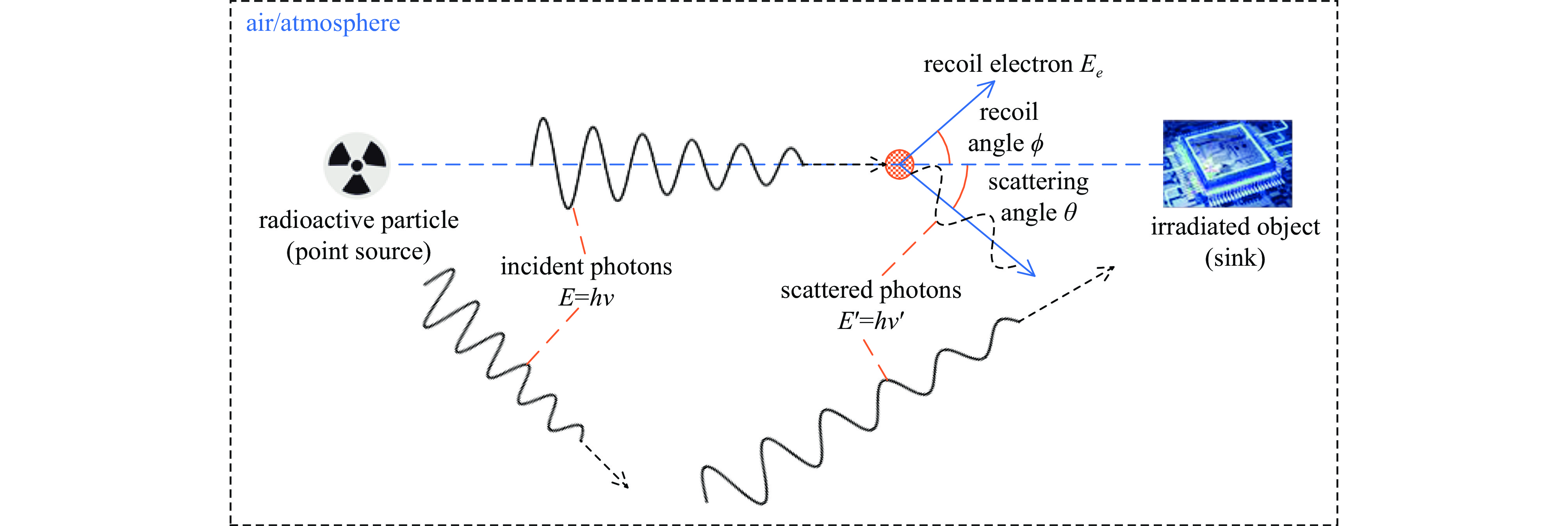
 下载:
下载:
